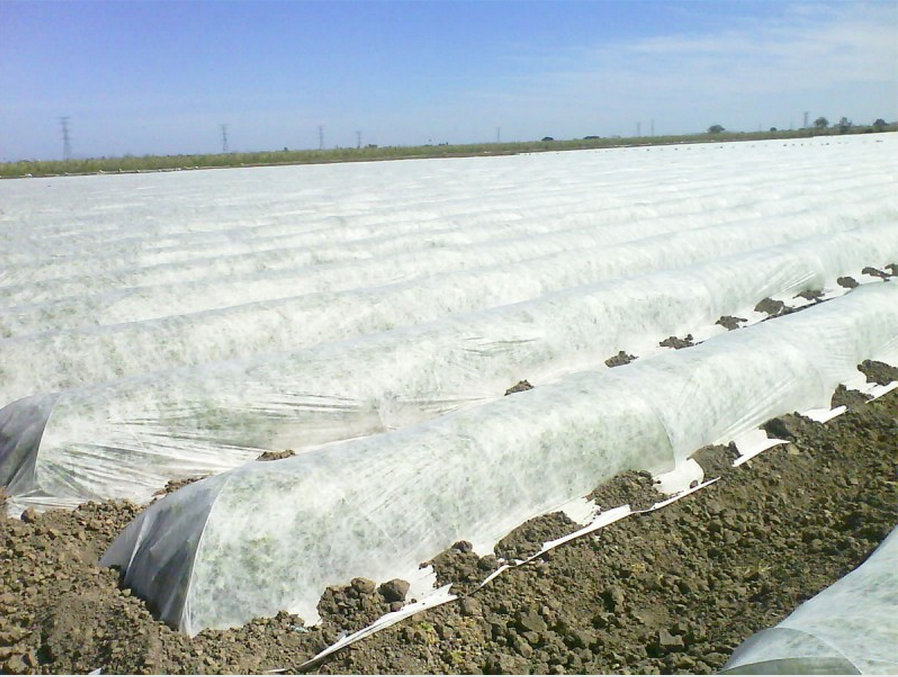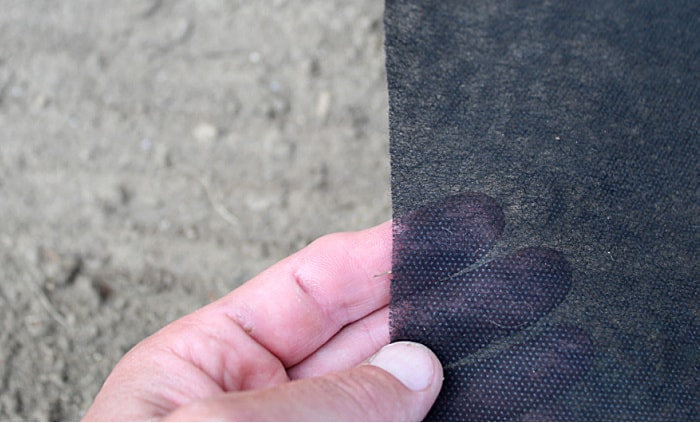
Non-Woven Industry Development. Non-woven fabric was developed in the petrochemical sector after the invention of plastic cloth (film). It is lighter and better air-conditioned than plastic cloth. It is widely used in hygiene and medical products such as sanitary napkins and facial towels. Later it was incorporated into engineering to it. Non-woven fabric is used to protect vegetables from damage caused by cold. Although the production of non-woven fabrics is more complex than plastic film, the ingredients are basically the same. These include PE (polyvinylchloride), EVA, Ethylene Vinyl Acetate copolymer), EVA and PVA (polyvinyl alcohol). Traditional plastic film is formed into a thin film melting the plastic before inflating it. The film is continuous and may be extended indefinitely. The film's surface is completely free of pores. It is totally inert and blocks all movement and exchange of molecules. Artificial chemical fibers, created using the above listed raw materials became the hottest product in the textile industry. However these fibers are still made into cloth using traditional warp and weft weaving. Non-woven materials are created by interspersing fibers on the same plane at different angles in every direction, rather than using traditional methods of warp and weft. It provides better material properties and is easier to produce than traditional woven materials. This reduces the traditional drawing process and allows for lower production costs. In recent years Non-woven fabrics have been widely used in the apparel sector. In recent years, due to the advancement of materials science and the advancement of manufacturing technology, non-woven fabrics have become more diverse and utilized more and more widely. Different materials and products produced are evident in our life. The demand for non-woven fabrics in agriculture has increased mainly due to their lightness and ease of production and diversity. See this non woven weed control fabric for more info.

Applications of Non-Woven Fabrics in Agricultural IndustryNon-woven fabrics were first applied to agriculture in Europe in 1978 in order to keep carrots warm for early harvesting and to guard against tomato leaf virus and whiteflies. Non-woven fabrics can be employed to mulch tomatoes, sweet peppers, sweet potatoes, and also carrots, root vegetables, the carrots. They also help with the development of other vegetables, such as lettuce, cabbage and radishes. It's used to keep heat, promote early harvesting, and control insects. Non-woven materials are great for covering surfaces such as grass-proof mats. They also can increase the temperature of soil by keeping water. Short fibers are used to create water-absorbing blankets that are placed on nursery beds to allow the roots to fully absorb water. They can also be used as the basis for turf production or as lawn grass to moisten drainage, drain and divide the garden. They are also used as planting bags for large woody plants such as fruit trees and garden trees which help to control weeds and retain moisture. Non-woven fabric can also be utilized as crop covers in Taiwan. They are also extensively used to lower energy consumption in large greenhouses. Double-layered curtains and canopy covers minimize radiation and heat in the evening. TAVIK fabrics are non-woven, spun-bonded non-woven TAVIK fabrics that have high density were first used to shade and protect cauliflower bulbs. The low thermal conductivity, high shading ability and easy recycleability soon made it popular for farmers. Later, it was utilized to protect leaf vegetables and their insect-proof cultivation. Later it was used for shading, heating and preserve fruit trees and pineapples. However, due to Taiwan's unique climate and ecology and its unique climate, the growth of the industry of non-wovens has been slow. Taiwan non-woven fabric manufacturers continue to innovate non-woven technology and focus on air permeability, water absorption, and water repellency in non-woven fabrics. It is used for preservation and storage of agricultural goods. See this wholesale agriculture non woven fabric for more information.
